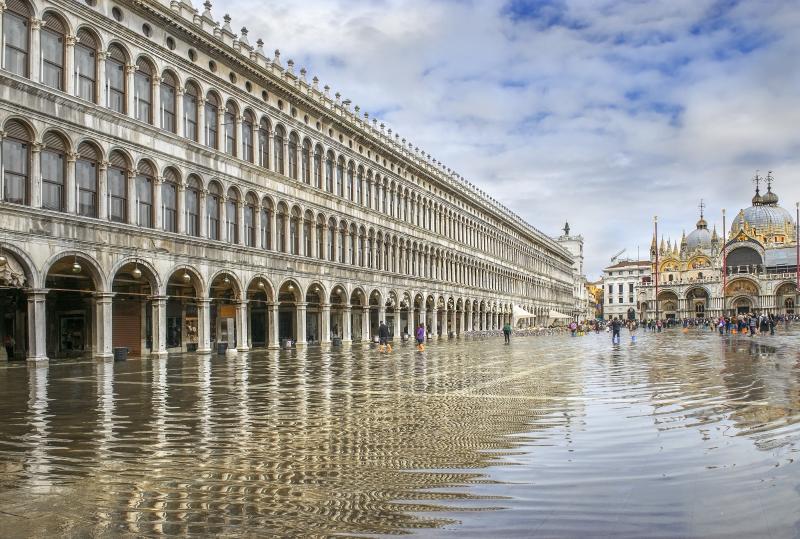Transparent barriers erected around the perimeter of St. Mark’s Basilica in Venice are turning the tide against the city’s infamous acqua alta (high water).
Considered a critical stop-gap solution until the pavement in the square can be raised, the temporary “glass belt” around the 928-year-old structure was installed in order to protect its precious mosaic and marble floors without obscuring the church’s magnificent façade. The wall has four openings — two on the sides and two before the main entrance — that are sealed with watertight metal bulkheads during acqua alta periods.
So far, so good: On November 7, the water mark in the low-lying piazza reached 95 centimeters, yet the cathedral’s interior remained dry as a bone. The city's official inauguration of the barriers had not yet taken place, but the structure proved durable ahead of any formalized ribbon-cutting or major municipal announcements.
The bigger picture for St. Mark's and Venice
Venice, which lies on an archipelago between the Adriatic Sea and the Venetian lagoon, is home to a maze of canals, footbridges and narrow streets. Despite the city’s mesmerizing beauty — which attracts some 20 million visitors a year — its survival has long been under threat.
Year after year, flooding has worsened due to climate change, rising sea levels, sinking foundations and the human-made effects of mass tourism, causing preservationists to sound the alarm — loudly and repeatedly. Without significant changes to the city’s fragile infrastructure, experts estimate that if sinking continues at its current rate of about 2mm per year, Venice could find itself completely underwater by the year 2031.
Of all the treasured monuments in Venice, St. Mark’s has been among the hardest-hit.
“We really needed this barrier to keep out the salt water, which has been damaging the mosaics. Finally they are safe,” Simone Venturini, Deputy Mayor for Social Welfare, Tourism, Health and Economic Development told Italian and international press.
The barrier is not a permanent solution, but an initial step in a long-term project by the City of Venice aimed at lifting the pavement and protecting the “nucleus” of St. Mark’s Square. City officials outlined an expected timeline for all of the works to come at a conference in late October.
Of the larger project, Venice’s Councillor for Commerce Sebastiano Costalonga explained, “This is a long-awaited intervention that will bring the beauty of St. Mark’s Square back to Venice," pointing to his direct collaboration with the Councillor for Public Works, Francesca Zaccariotto. “It is a complex project, with more construction sites [soon to get underway], but the use of the square will always be guaranteed.”













